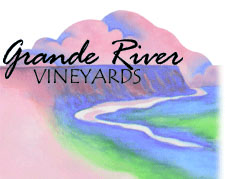 Stephen Smith attended wine appreciation classes at Denver University in 1982–84, winemaking seminars at the New Mexico Wine and Vine Society in Albuquerque from 1984 to the present, and extension courses at U.C. Davis (including Table Wine Production, White Wine Production, Wine Filtration and Wine Lab Procedures). He is the owner of Grande River Vineyards in Palisade, Colorado.
Stephen Smith attended wine appreciation classes at Denver University in 1982–84, winemaking seminars at the New Mexico Wine and Vine Society in Albuquerque from 1984 to the present, and extension courses at U.C. Davis (including Table Wine Production, White Wine Production, Wine Filtration and Wine Lab Procedures). He is the owner of Grande River Vineyards in Palisade, Colorado.
While it doesn’t play as dominant a role as it does in beermaking, yeast selection does nudge wine styles in desired directions. It enhances varietal character and makes fermentation a smoother, simpler process. As an example, if you pick yeast that limits sulfur-dioxide production in a wine that demands limited SO2, then you don’t need to work at reducing it.
Scott Labs, Vinquiry, The Wine Lab, Presque Isle and other suppliers have catalogs that describe different strains and their characteristics. You can also go straight to the labs, like Lallemand, Red Star, White Labs, or Wyeast. I suggest that winemakers contact these companies and get on their mailing lists. Information is sometimes available on their Websites as well. You can contact the labs by phone, snail mail or e-mail. Sometimes, you might get to speak directly with a yeast specialist. These professionals will often be able to recommend something for your variety, style, processing or concerns, and tell you things about the yeast that will help the quality of your finished wine.
Grande River Vineyards has used yeast selection as an important tool since our first commercial vintage in 1990. Back then, we selected Pasteur (Bordeaux red) to ferment our Meritage Red components, Merlot, Cabernet Franc and Cabernet Sauvignon.
We want to be sure our wines have a strong fermentation, with minimal problems from a stressed fermentation. Problems from stressed fermentation include hydrogen sulfide production. Hydrogen sulfide (H2S) is the stinky, rotten-egg-smelling substance that sometimes effects fermentation. It is considered a fatal flaw. Some yeast is thought to be more prone to H2S production. Montrachet is one example.
Hydrogen sulfide production would cause us to press the wine off the skins early. Normally, we conduct extended maceration for 2 to 3 weeks after fermentation. This allows us to get maximum tannin extraction for our big reds.
Fermentation stress can occur from a lack of adequate yeast nutrients to keep a strong fermentation going all the way to finish. We usually add nitrogen via Diammonium Phosphate (DAP) or a combination of nutrients such as Actiferm or Superfood. Yeast can do more than guarantee strong fermentation. It can also save a batch that is on the way to ruin.
In the early 1990s, an old Sauvignon Blanc vineyard that we acquired from a neighbor was prone to sour rot. One year, by the time the grapes were pressed, the native-yeast fermentation was in full swing. The juice was brown and oxidized and gave off acetic odors.
The supplier recommended a killer yeast, K-1, which is recognized for its ability to start rapidly and out-compete a fermentation that’s already in process. The supplier overnighted the yeast, we pitched it, and within a day or two after inoculation the aromas were sweet and the must light green and healthy looking. We went on to make an award-winning Sauvignon Blanc out of that batch, which featured nice varietal characters.
If you are making a wine that requires further processing — such as stopping a fermentation with residual sugar by chilling the must, or the addition of spirits to make a port — you can select a yeast that will make this job much easier. For example, Epernay 2 is a selection known to be sensitive to cold. Often, our late-harvest wines (like Sémillon) are picked at 28–30 °Brix with the idea of stopping fermentation with 5–8% residual sugar. When it’s time to stop fermentation, we turn the chiller on the tank to a colder temperature.
The first time we used Epernay 2, we actually started the chilling a little early because we figured 1 or 2 °Brix would be consumed before it could shut down. Epernay 2 is so cold-sensitive, however, that the yeast stopped on a dime. We actually had to warm up the wine, restart it, and then shut it down again later.
Of course, you can pick yeast to influence the flavor of your wine. In the late 90s we turned to CSM, a Bordeaux isolate. We like it because it is credited with releasing aromas, expressing fruit, and reducing vegetal character. These are attributes we’re looking for in our Meritage Red components (Cabernet Sauvignon, Cabernet Franc and Merlot). Our Merlot, which is made in a softer, more supple style, is fermented with Vinquiry’s Burgundy yeast. This yeast is known for rich mouthfeel, fruit expression and enhanced varietal character.
 Jeff Murphy did a winemaking internship at Glenora Winery in Dundee, New York. He was the head winemaker at Arrowhead Wine Cellars in North East, Pennsylvania and is now the winemaker for Willow Creek Winery in Silver Creek, New York.
Jeff Murphy did a winemaking internship at Glenora Winery in Dundee, New York. He was the head winemaker at Arrowhead Wine Cellars in North East, Pennsylvania and is now the winemaker for Willow Creek Winery in Silver Creek, New York.
You have good wine yeast if it gives you the attributes you are looking for. Simple as that! Maybe you need yeast that ferments well at low temperatures, or one that stops fermenting when the alcohol level reaches a certain point. Yeast that does the job you want is one of the keys to winemaking.
Say, for example, you’re making something like a Riesling. With wine like this, you don’t want super strong yeast — by this I mean something that keeps fermenting at high alcohol levels. Riesling should maintain a hint of sweetness, so the wine should peter out around 10-11 percent alcohol. A good one that I like for this is W-17, which is a Lalvin strain.
If you have a Chardonnay, you’re working with a higher Brix to start with. The wine should finish with a strong fermentation and be dry. I like D-254, also a Lalvin strain and a Rhône yeast for this. It’s a nice, strong fermenter that gives off a strong butterscotch aroma and nice fruit characteristics. I also use it on reds because it adds a nice spiciness. It works well on Cabernet Franc, Cabernet Sauvignon, Syrah, and most hybrids.
RC-212 is a strain that works well with Pinot Noir. This is a Burgundy strain designed specifically for this grape. It doesn’t add much to the wine — basically, it just massages the grape and lets the fruit speak for itself. But again, this yeast is a strong fermenter and a Lalvin strain.
For country or fruit wine, I’d recommend Prise de Mousse, EC-1118, or K-1. Each of these strains is versatile and has good viability. They are strong, low-foam fermenters, and they work well at low temperatures. This last point is key: Fruit wine doesn’t have much complexity anyway, so if you ferment too warm you’ll lose the flavor. As a basic rule, if you can smell fruit when fruit wine is fermenting, you’re losing flavor. Below 60 °F (16 °C) should be the target.
These last three yeast strains are also good for sparkling wine or just as a general workhorse yeast for a variety of wine styles. I use each of them on North American natives and French-American hybrid grapes. I find this to bring good results.
 Stephen Smith attended wine appreciation classes at Denver University in 1982–84, winemaking seminars at the New Mexico Wine and Vine Society in Albuquerque from 1984 to the present, and extension courses at U.C. Davis (including Table Wine Production, White Wine Production, Wine Filtration and Wine Lab Procedures). He is the owner of Grande River Vineyards in Palisade, Colorado.
Stephen Smith attended wine appreciation classes at Denver University in 1982–84, winemaking seminars at the New Mexico Wine and Vine Society in Albuquerque from 1984 to the present, and extension courses at U.C. Davis (including Table Wine Production, White Wine Production, Wine Filtration and Wine Lab Procedures). He is the owner of Grande River Vineyards in Palisade, Colorado.

 Jeff Murphy did a winemaking internship at Glenora Winery in Dundee, New York. He was the head winemaker at Arrowhead Wine Cellars in North East, Pennsylvania and is now the winemaker for Willow Creek Winery in Silver Creek, New York.
Jeff Murphy did a winemaking internship at Glenora Winery in Dundee, New York. He was the head winemaker at Arrowhead Wine Cellars in North East, Pennsylvania and is now the winemaker for Willow Creek Winery in Silver Creek, New York.


